

Tech Log: The Role of CMOS Cameras in ADAS
Autonomous driving is a term that is often misused. Even if a car can automatically accelerate, decelerate, turn, or even park, it cannot be considered "autonomous driving" until human operation is completely eliminated. ADAS is the advanced driving assistance system that you should know and be familiar with. What is ADAS?
What is ADAS?
An accident caused by Tesla has once again brought "autonomous driving" to the forefront. Although the highly reliable system makes people unconsciously ignore the importance of driving safety, the development of ADAS does not mean that the steering wheel can be completely handed over to the computer. The original intention of the development of the ADAS system is to keep a close eye on the road conditions at all times and be the last line of defense for safety.
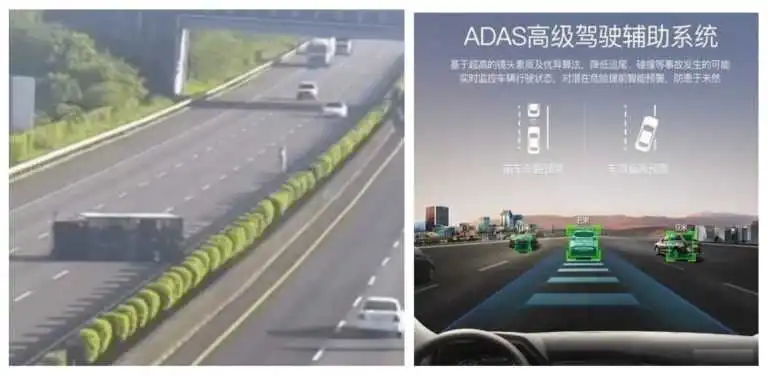
ADAS is the abbreviation of Advanced Driver Assistance Systems. Did you notice that the Systems at the end is plural? This is not just a single system. Many active safety assistance technologies can be included in the scope of ADAS systems. ADAS is the foundation of autonomous driving. To realize the commercialization of driverless driving, it is necessary to promote and popularize ADAS first.
ADAS systems typically include :
-
Adaptive Cruise Control (ACC), Automatic Emergency Braking (AEB)
-
Blind Spot Detection (BSD)
-
Forward Collision Warning (FCW)
-
Lane Departure Warning (LDW)
-
Heads-up Display (HUD)
-
Automotive Night Vision System (NVS)
-
Intelligent Speed Control (ISA)
-
Intelligent Headlight Control (AFL)
-
Parking Assist (PA)
-
Pedestrian Detection System (PDS)
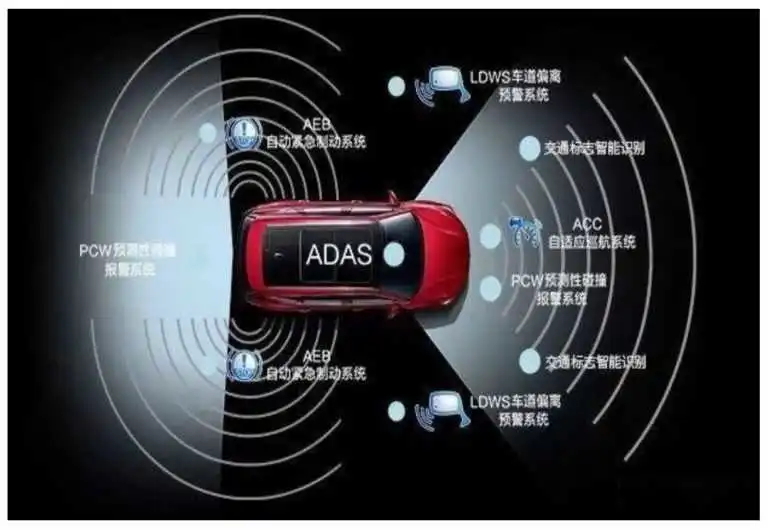
Introduction to common ADAS sensors :
Currently, the commonly used environmental perception sensors for ADAS include cameras, millimeter-wave radars, ultrasonic radars, lidars, etc.
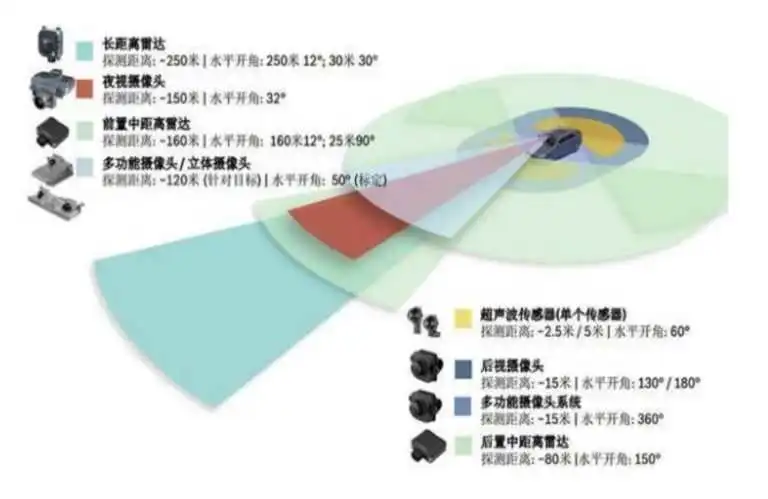
The role of cameras in ADAS :
Cameras are easy to install and use, can obtain a large amount of image information, have low investment costs, and have a wide range of applications. In recent years, thanks to the rapid development of digital image processing technology and the improvement of computer hardware performance, they have become an indispensable sensor for ADAS. The main functions of cameras in ADAS are shown in Table 1.

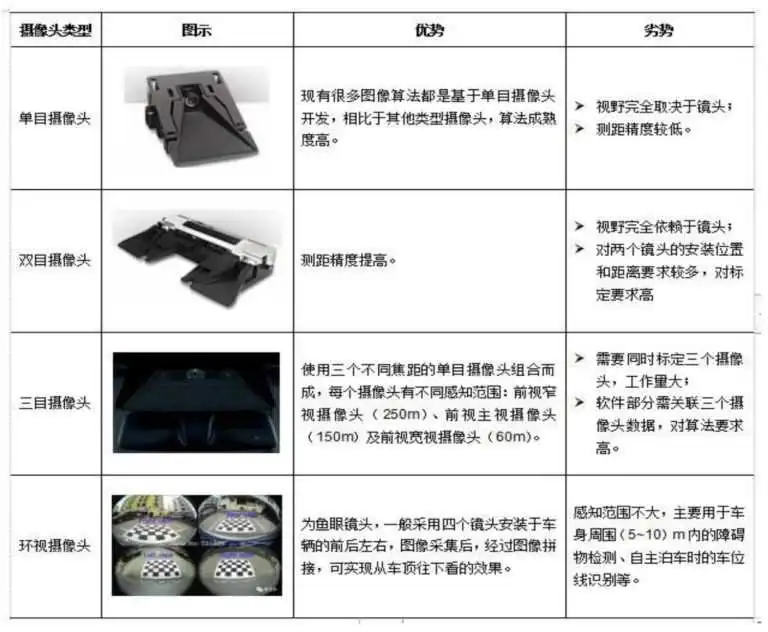
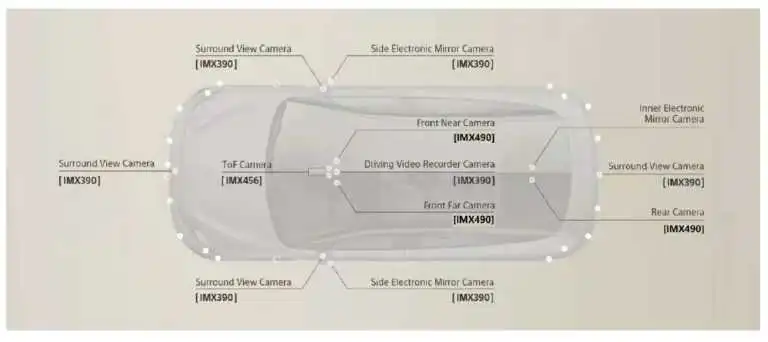
|
FV-ADAS: IMX424/IMX728 * 2 |
AVM: IMX390/IMX622 * 4 |
|
RV-ADAS: IMX424/IMX728 * 1 |
Side Mirror: IMX390/IMX622 * 2 |
|
|
DVR: IMX021 * 1 |
The role of millimeter wave radar in ADAS :
The available frequency bands for vehicle-mounted millimeter-wave radars are 24 GHz, (60~61) GHz, and (76~79) GHz. The current mainstream bands are 24 GHz and (76~79) GHz. The higher the frequency and the shorter the wavelength of the millimeter-wave radar, the higher the accuracy of its distance and speed measurement. The current development trend of millimeter-wave radar is from low frequency to high frequency. In order to meet the needs of different detection distances, a vehicle is usually equipped with multiple short-range, medium-range, and long-range millimeter-wave radars. Among them, 24 GHz radar is mainly used for short-range detection (SRR), and (76~79) GHz radar is mainly used for medium and long-range detection (MRR, LRR).
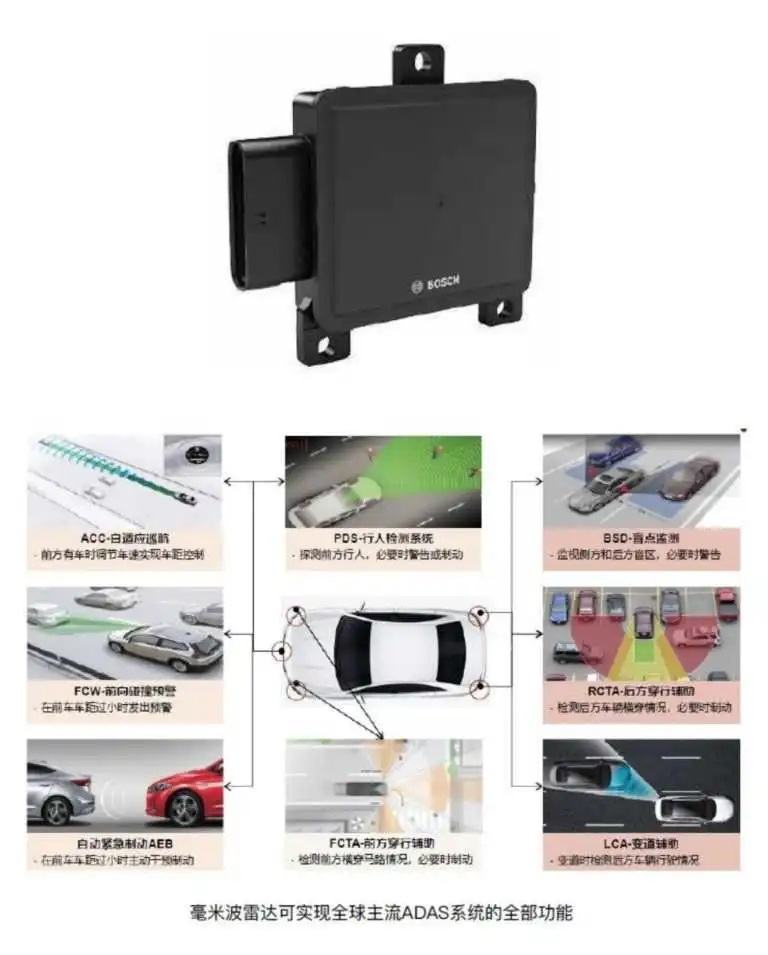
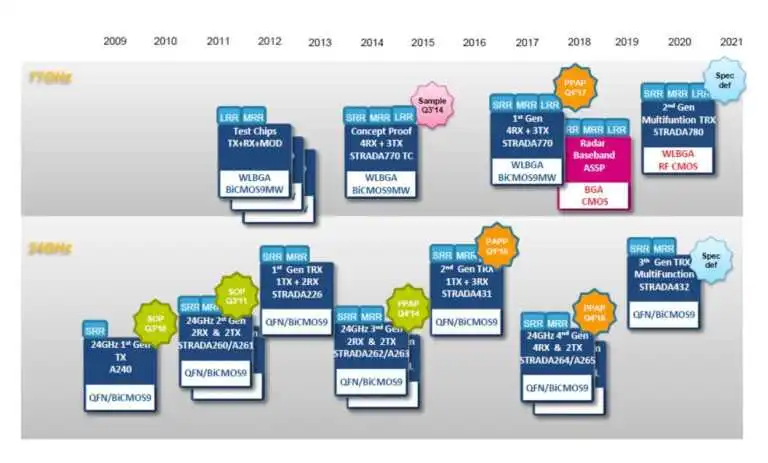
Ultrasonic radar :
Ultrasonic radar uses the ultrasonic generator in the sensor to generate 40KHz ultrasonic waves, and then the receiving probe receives the ultrasonic waves reflected by the obstacle, and calculates the distance to the obstacle based on the time difference between the ultrasonic reflection and reception, as shown in the figure. Ultrasonic radar has low cost, high detection distance accuracy, and is not affected by light conditions, so it is often used in parking systems. There are two common ultrasonic radars: the first is called UPA, which is installed on the front and rear bumpers of the car to detect obstacles in front and behind the car, and the detection distance is generally (0.15~2.5)m; the other is called APA, which is installed on the side of the car to detect obstacles on the side of the car, and the detection distance is generally (0.3~5)m. The parking system is generally equipped with a total of 8 UPAs in the front and rear, and 4 APAs on the left and right sides.

Willas-Array product opportunities:
|
Item |
P/N |
Brand |
|
CMOS image sensor |
ISX031/ ISX021
IMX728/ IMX622/ IMX623/ IMX490 |
SONY |
|
Power |
RP550,R1245L |
RICOH |
|
|
XDL601/ XDL605 (DC/DC with inductor)
XD9267/XD9268 (DC/DC) |
TOREX |
|
Flash |
SST26WF040B-104INP |
Microchip |
|
FAKRA connector |
CRC5001-8201(Plug for PCB)
CRC1001 (Cable Plug) |
Vocational School |
|
B to B connector |
10126S-30A-GFN4
10126S-30B-GFN4 |
IRIS |
|
RADAR |
STRADA780(77G) STARADA432(24G) |
ST |
|
Others |
|
Murata |
In summary, ADAS systems include a variety of sensors, among which CMOS cameras account for a very important part. Willas-Array Electronics represents most of the related first-line brands and provides a wide range of product types for customers to choose from. At the same time, our engineering team can provide a full range of technical support to enhance customers' competitiveness in the market. Let us popularize ADAS with CMOS cameras first!
Focus on us

WeChat Public Number

Browse mobile terminal
Copyright©2024 Willas-Array Electronics (Holdings) Co., Ltd. All rights reserved
Technical Support:China Enterprise Power Kunshan SEO

Sample Application